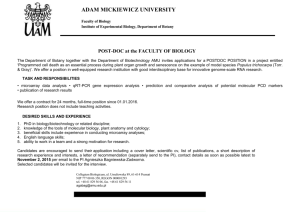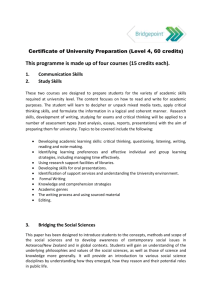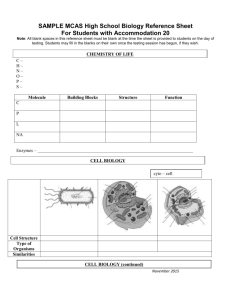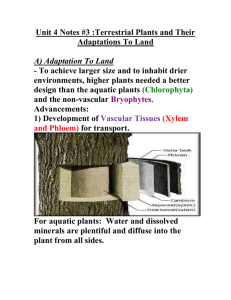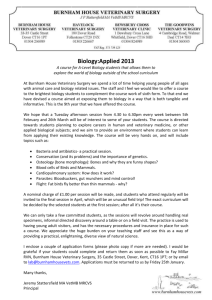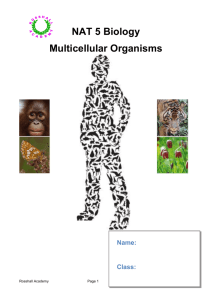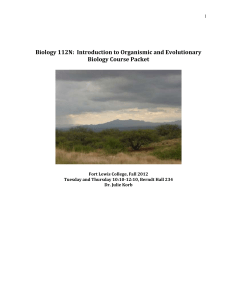Terrestrial Plants and Their Adaptations To Land
advertisement
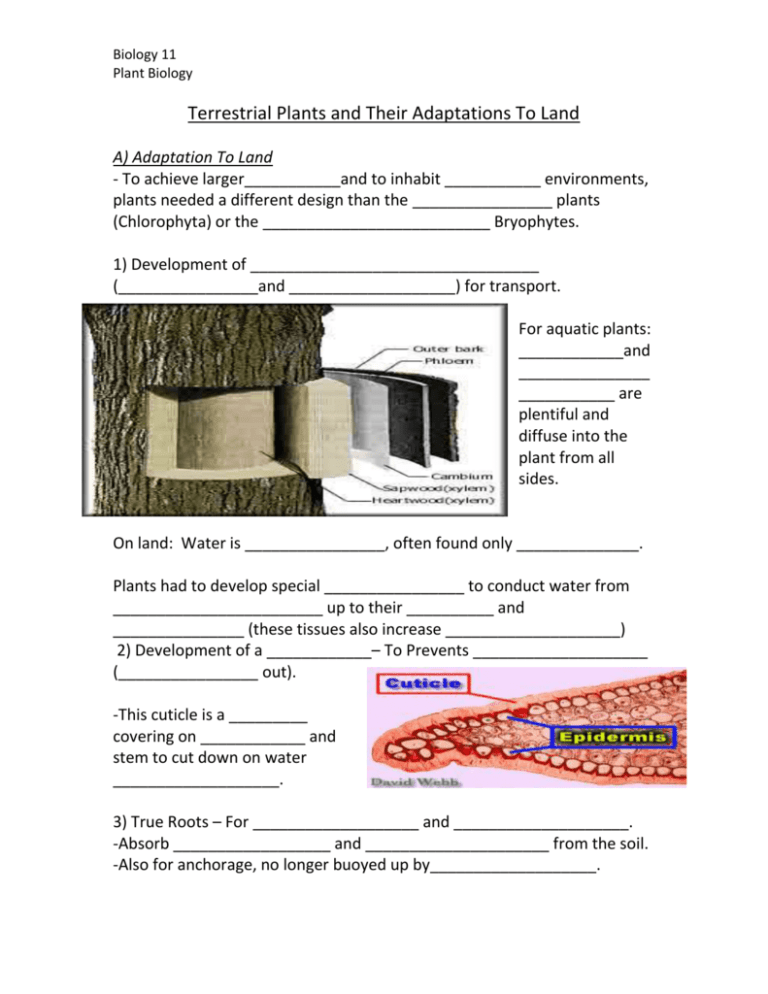
Biology 11 Plant Biology Terrestrial Plants and Their Adaptations To Land A) Adaptation To Land - To achieve larger___________and to inhabit ___________ environments, plants needed a different design than the ________________ plants (Chlorophyta) or the __________________________ Bryophytes. 1) Development of _________________________________ (________________and ___________________) for transport. For aquatic plants: ____________and _______________ ___________ are plentiful and diffuse into the plant from all sides. On land: Water is ________________, often found only ______________. Plants had to develop special ________________ to conduct water from ________________________ up to their __________ and _______________ (these tissues also increase ____________________) 2) Development of a ____________– To Prevents ____________________ (________________ out). -This cuticle is a _________ covering on ____________ and stem to cut down on water ___________________. 3) True Roots – For ___________________ and ____________________. -Absorb __________________ and _____________________ from the soil. -Also for anchorage, no longer buoyed up by___________________. Biology 11 Plant Biology 4) Protective ____________________for Gametes (sex cells) -Keep gametes from _______________________ Example: - Male sperm cell packaged up in - Ovules formed and protected in ___________________________. ________________of female part. 5) Protection for _____________________ (Developing Plant) -Example: ________________- keeps embryo from drying out, also promotes ______________________ by passing through the __________________________ of a given animal. -Also a proper ________________ - embryo with ________, and seed coat. 6) Mechanisms for the ___________________ of gametes and embryos. In water: Gametes and embryos _________ or ____________in water currents. On land: Use _____________ or rely on certain ________________ or other _______________for dispersal of male gametes (______________). - After pollination and fertilization, plant still need to rely on animals or wind to disperse their ____________________ (enclosed in ___________) Animal: Eat fruit, _____________ or _________________ seed adequate distance away. _________ or _____________ catch in the fur and fall elsewhere. Biology 11 Plant Biology B) Vascular Plants : The Tracheophytes Kingdom: Plantae Phylum: ________________________ Ferns – Subphylum : ________________________ The First Vascular Plants Pigments: 1) ______________________ 2) ________________________ Habitat: 1) Tropical and Temperate __________________ 2) Have evolved many _______________________ so that they are no longer limited to totally wet environments. They are still limited to environments that are at least ________________________ as they use flagellated ___________ to _________________ to the eggs. Adaptations: 1) Have ___________________________. a) Xylem: Tissue that includes _____________________________cells (hence Tracheophyta), these cells transport ______________ and dissolved ____________________ from roots to all parts of the plant. These cells have thick cell walls and provide ________________________ for the plant. b) Phloem: _________________ cells that transport nutrients and products of _____________________________ to all parts of the plant. 2) Strong true ___________ coming off of _____________________ (underground runners) 3) True ________________ (fronds) Biology 11 Plant Biology Alternation Of Generations In Ferns: - Unlike mosses, the ___________________________ is the dominant generation and the ___________________________ is minimized.




